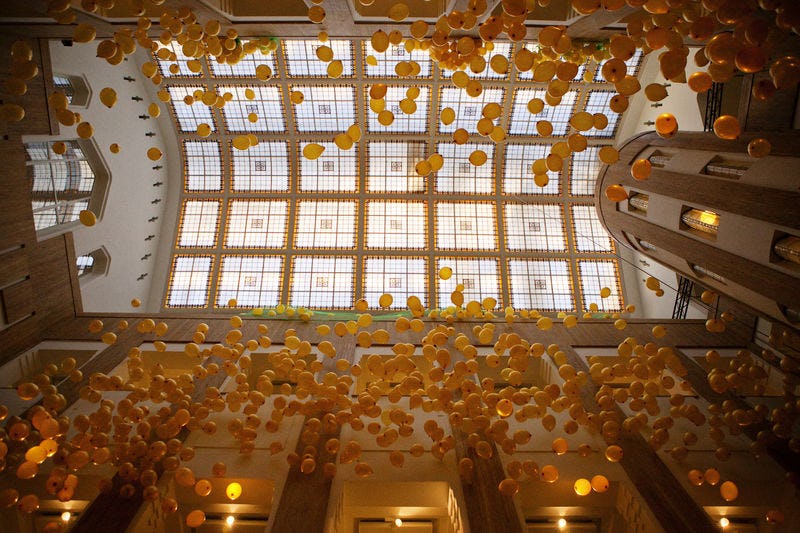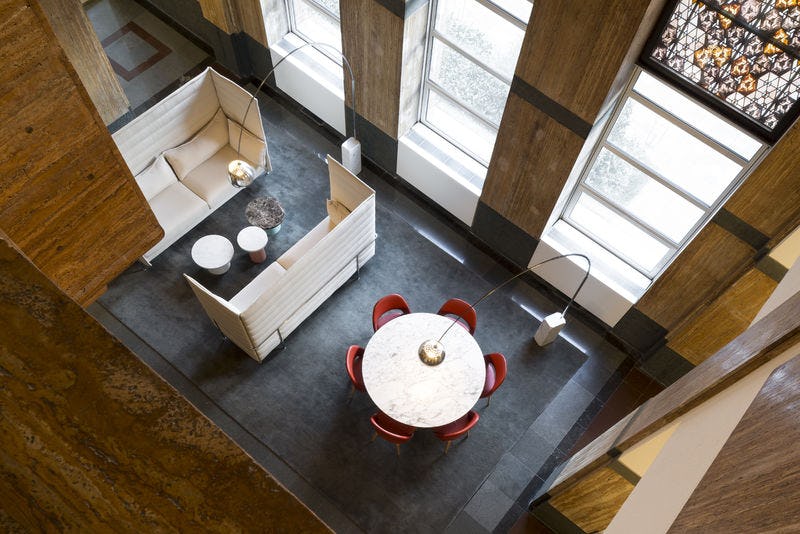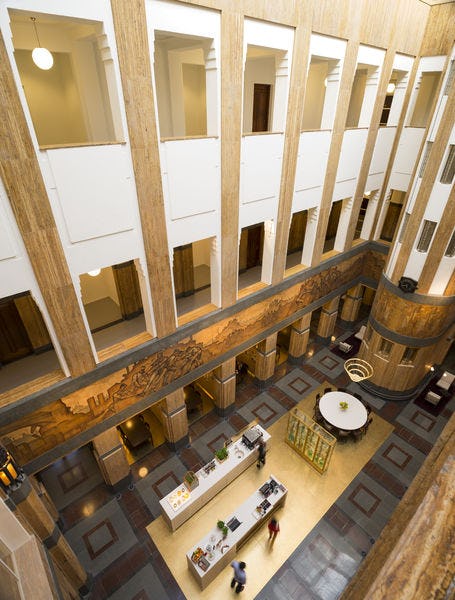
To date, we boast over 300 locations in over 250 cities worldwide. We’re proud about having our offices in some of the most iconic buildings on the globe: the Chrysler building, the Plaza Opera in Paris, and Rio de Janeiro’s Cinelândia, to name but a few. You can read more about our iconic locations here. But you’ve got to wonder, how does Spaces pick its spaces?
We don’t actually rely on analytics, or how much traffic there is to a particular area, or if it’s a commuter town, or an area that doesn’t have a coworking space already there (although these are all useful and definitely considered in the process). Our main decision is actually based on what building we want our Spaces to be in.
We’re big on buildings. And we’re proud to say that we go for the lost and forgotten buildings. Buildings that are too “costly” to do anything about and buildings where the energy use is poor. We refurbish, rewire, renew, and renovate until we get something that looks quite like a Spaces and acts like a Spaces. The goal is to breathe life back into old, beautiful buildings so they’re loved once more. Our renovations make the buildings energy smart and future-proof. One of the buildings we are particularly proud of is our Spaces Castle Park in Bristol, UK. Spaces Castle Park resides in an old chocolate factory, formerly owned by J.S. Fry & Sons, the geniuses responsible for Fry’s Turkish Delight.
Besides that, we also look for buildings that fit our aesthetic – high walls, open space, and most importantly, lots of light. We also really like to keep the essence of the building alive after we repurpose it. If there’s something distinctive about a building, something that makes it unique and beautiful, we’ll keep it in and work around it. It’s all about preserving history, while paving the way for the future.
A perfect example would be our location in the Hague, Netherlands. At Spaces Rode Olifant we hung on to the wooden panels, marble banisters, and stained glass windows. All of which tell a story of their own. The construction of the building was completed in 1924, designed for the American Petroleum Company. The stained glass windows consist of interlocking hexagons in purples, greys, and dirty yellows – a nod to the chemical compound for oil. The ground floor and former foyer, now home to our business club and the cafe, boasts a wooden panel that wraps around the circumference of the room. The panel depicts pictures of working life in the Hague and of the construction of the building back in the early twenties. If you look directly above, you can see the glass roof over head. It features the same glass from when it was built, with touches of stained glass here and there. As the original glass roof is too delicate to endure some of the more trying episodes of Dutch weather, a much sturdier glass roof was built over it more recently to protect it. It’s by making adjustments like these, that these buildings go into a whole new lifecycle. You can read more about the Rode Olifant’s history here.
Do you want to work in a beautiful office that’s been repurposed to be energy conscious and fit for the future? Check out our locations here and try them on for size and find the right fit for you.
Share this article
 Read now New Spaces’ opening in October: from downtown US to epic Europe
Read now New Spaces’ opening in October: from downtown US to epic Europe
 Read now Success at any age - how to combat ageism in the workplace
Read now Success at any age - how to combat ageism in the workplace

